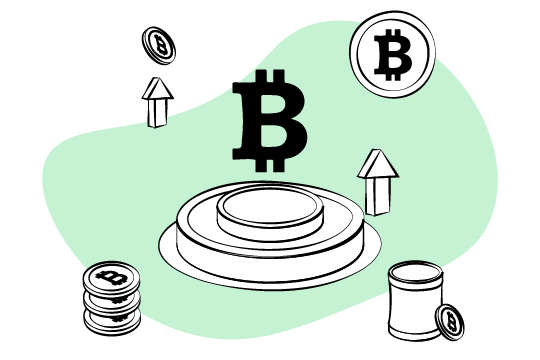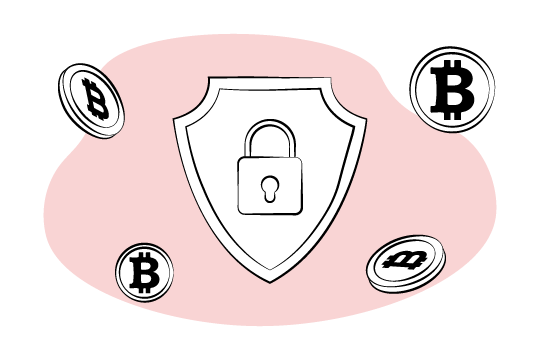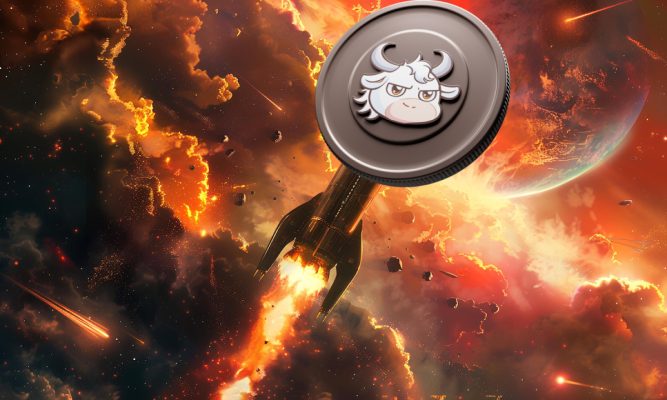In the cryptocurrency industry, one of the key discussions spins around classifying digital assets as commodities or securities — a distinction that holds significant implications for the crypto market.
It’s a discussion that increasingly fuels investors, especially as in August 2023, a New York District Court provided a moment of satisfaction for the cryptocurrency community by officially designating Bitcoin and Ethereum as “crypto commodities.”
However, the past half-decade has witnessed a fervent debate between US market regulators and ardent crypto enthusiasts centered on whether cryptocurrencies should be regarded as securities or commodities. As we step into 2024, it appears that this ongoing discourse is poised to reach a critical point.
But until then, in this article, we’ll explain what a commodity or security is, why it’s crucial how a crypto is categorized, the whole story behind the debates, and many other interesting facts. Let’s dive in!
What is a Commodity?
A commodity is a tangible product, often a raw material, that is primarily used to produce other goods and services. They are usually divided into hard commodities and soft commodities.
- Hard commodities predominantly encompass energy goods, such as oil, natural gas, or coal, along with various metals like gold, silver, copper, iron ore, or platinum.
- Soft commodities primarily consist of agricultural goods, including corn, wheat, soy, sugar, coffee, oilseeds, cotton, cocoa, rubber or others.
These commodities have historically served as mediums of exchange and stores of value, particularly precious metals like gold and silver.
Commodities are traded on exchanges. Traders engage with commodities through buying and selling on the spot market or using financial tools like futures and options.
Commodities usually meet certain key characteristics, such as:
- Fungibility – Commodities are interchangeable, meaning one unit is equivalent to another of the same type. This interchangeability facilitates easy trading and risk management.
- Standardization – Commodities often adhere to agreed-upon specifications for quality and grade. This standardization simplifies transactions between buyers and sellers.
- Liquidity – Commodities are generally considered liquid assets, enabling easy and quick trading. This liquidity is particularly crucial for investors seeking access to the commodities market.
- Volatility – Commodities prices frequently experience fluctuations, showing significant changes in a short time. This volatility poses both risks and opportunities for investors.
Worldwide, there are governmental institutions that must supervise commodities. For instance, the Commodity Futures Trading Commission (CFTC) oversees derivatives trading in the United States. Initially focused on agricultural products when established in 1974, the markets regulated by the CFTC have evolved and become more complex, including fintech and digital currencies.
What is a Security?
A security is a tradable financial instrument with monetary value that usually represents ownership in a corporation through stocks, a creditor relationship via bonds, or rights through options. Securities are often classified into equities and debts, with some hybrid securities combining features of both.
- Equity securities – mean ownership in an entity, realized through common or preferred stock. While equity holders may not receive regular payments, they can profit from capital gains upon selling. Equity holders also have voting rights, control over the company, and a residual interest in bankruptcy.
- Debt securities – including bonds and certificates of deposit, represent borrowed money with defined terms like interest rate and maturity. Debt holders receive regular interest payments and principal repayment without voting rights. These securities may be secured or unsecured, with secured debts having priority in bankruptcy.
- Hybrid securities – like equity warrants and convertible bonds- blend debt and equity features. Preferred stock, though technically equity, is treated like debt due to its fixed dividend rate, making it appealing to income-seeking investors.
While people commonly associate the term “securities” with stocks and bonds, the U.S. Supreme Court interpreted it more broadly in the case of Howey vs. SEC (1946). The court ruled that selling land and agricultural services could be an “investment contract,” even without involving stocks or bonds.
This is important because this case established the Howey Test, which determines if an investment falls under securities regulation. According to the test:
- There must be an investment of money.
- The investment is made into a “common enterprise.”
- Investors expect to profit from their investment.
- Any expected profits result from the actions of a third party or promoter.
This rule means that any investment can be classified as security regardless of legal formalities or the absence of stock certificates. Recently, the SEC has taken action against issuers of cryptocurrencies and non-fungible tokens. A well-known and recent case is SEC vs. Ripple.
As in the case of commodities, worldwide, governmental institutions must supervise securities. For instance, the Securities and Exchange Commission (SEC) is the independent federal government regulatory agency responsible for protecting investors, maintaining fair and orderly functioning of the securities markets, and facilitating capital formation in the United States.
Commodity vs. Security: Key Differences
Nature of Investment
Maybe the most common distinction between commodities and securities lies in the nature of what is being bought and sold, even if both are liquid assets, allowing for easy exchange.
Commodities are basic goods traded or exchanged, while securities involve taking an ownership stake or providing credit to a common enterprise with the expectation of earning a profit.
Regulatory Oversight
The regulatory oversight further underscores the differences between commodities and securities.
Commodities, subject to oversight by institutions like the Commodity Futures Trading Commission (CFTC), generally face less stringent regulations.
In contrast, securities must adhere to more stringent regulatory and enforcement policies implemented by institutions like the Securities and Exchange Commission (SEC).
Legal Framework
Securities and commodities operate under distinct laws and regulatory bodies.
The SEC regulates securities under the Securities Act of 1933, while the CFTC oversees commodity markets under the Commodity Exchange Act of 1936.
These differing legal frameworks impact buyers, sellers, and investors, potentially necessitating different legal considerations.
Market Influences
Commodity prices are predominantly driven by supply and demand dynamics. Factors such as poor harvests or increased demand can significantly impact commodity prices.
On the other hand, securities prices are influenced by a broader set of factors, including the financial health of the issuing entity, prevailing interest rates, investor sentiment, and overall economic indicators.
The Eternal Debate: Is Crypto a Commodity or Security?


SHORT ANSWER. Depends on one digital asset to another and who you ask. Some are securities for clear, some aren’t, and some are unclear. Regulators are working to create better regulations that match the different kinds of digital assets out there.
LONG ANSWER. Related to traditional financial instruments and goods, it’s easy to tell if something is a commodity or a security. But when it comes to digital assets, it gets a bit tricky. Why? Well, even since crypto emerged and became slightly popular, there’s been a big debate about whether it’s a commodity or a security.
Nowadays, if you ask different people, you might get different answers to this question.
But Why Does How We Classify Crypto Matter?
Classifying cryptocurrencies and digital assets as commodities or securities matters because it decides how they get regulated. Generally, securities are more highly regulated than commodities. Commodities are taxed more favorably than securities.
How Did This All Start?
The SEC and financial regulators have been arguing about how to label crypto since Bitcoin showed up. They needed a clear way to know who’s in charge of what.
In the beginning, Bitcoin, often called “digital gold,” was mostly seen as a “store of value” (because it has a finite total supply of 21 million). And that’s pretty much how it is seen even today.
Instead, Ethereum’s token, Ether (ETH), powers the Ethereum blockchain, and regulators say it’s like oil or gas, making it a commodity, too. Or at least that’s what former SEC division director William Hinman said in a 2018 speech regarding the status of Ether. But in the last five years, as people got more into crypto and tokens became more and more popular, there’s a growing understanding that each crypto needs its own classification. That’s why, in October 2022, the SEC changed its stance on many crypto coins and tokens.
What Triggered the SEC’s Shift in Perspective?
The SEC’s change of stance didn’t happen overnight; it was influenced by various factors and pressures. Here are the key considerations that played a pivotal role in changing the SEC’s stance:
1. ICO Boom
A significant factor was the rise of Initial Coin Offerings (ICOs), where crypto projects, including Ethereum, raised funds by offering tokens to investors. ICOs resembled traditional Initial Public Offerings (IPOs) but with a crypto twist. The SEC, concerned about investor dependence on third parties for token appreciation, took notice.
2. Investor-Centric Approach
Cryptocurrencies, often marketed as digital currencies for online transactions, saw most buyers expecting token value to rise. The SEC emphasized that labeling cryptocurrencies as “utility tokens” doesn’t exempt them from being considered securities, especially if investors anticipate profits.
3. Project Dynamics
While a corporate entity might not oversee a crypto project, individual promoters holding significant token amounts could influence the project’s value. The SEC recognized the potential dependence on these individuals, even if not managed by a traditional company.
4. Scams and Market Shocks
Historical events (like the 2014 Mt. Gox scandal, where a major exchange lost millions in bitcoins) raised concerns about the security of centralized exchanges. This incident marked a turning point, urging regulators to scrutinize cryptocurrencies.
Moreover, the collapse of the TerraUSD stablecoin in 2022 further underscored the risks and fueled the call for more stringent regulations.
And if we add events since the SEC’s change of stance, let’s not forget FTX. The FTX case added to the regulatory scrutiny, highlighting the need for a more comprehensive approach to overseeing crypto.
These events collectively influenced the SEC’s evolving perspective on crypto regulations.
Current SEC Perspective on Crypto Assets
Currently, the Securities and Exchange Commission (SEC) is taking a careful stance in overseeing cryptocurrencies, considering many of them to fall under its jurisdiction as securities. This intensified focus on crypto regulation started once Gary Gensler assumed the role of Chairman of the SEC.
Gensler has been a strong advocate for tighter regulations in the crypto market, underscoring the need to safeguard investors and prevent fraud. The SEC Chairman, Gensler, said the agency intends to be “the cop on the beat” for the cryptocurrency market and encouraged Congress to give the SEC more authority to regulate cryptocurrencies.
What Does the Crypto Industry Want?
The crypto industry has generally expressed a preference for a less prescriptive regulatory approach, claiming that overregulation could stifle innovation and hinder the growth of the industry.
There’s a widespread call for clearer guidelines from the SEC on how it will use the Howey Test for different cryptocurrencies.
What Questions Should You Ask About a Crypto to Find Out If It’s a Commodity or a Security?
When assessing the status of a cryptocurrency to find out if it’s a commodity or a security, you can consider these questions:
- Decentralization: How decentralized is the crypto network? Does it rely on a centralized entity for management, upgrades, and operation?
- Token Concentration: How concentrated is the token holding among the development team?
- Issuance and Use of Proceeds: Who is issuing the cryptocurrency, and who benefits from the proceeds? How are the proceeds being utilized?
- Post-ICO Fundraising: Is the development team raising funds after the Initial Coin Offering (ICO)?
- Target Audience: Is the ICO aimed at the general public or potential blockchain users?
- Utility: What is the utility of the cryptocurrency?
Security vs. Commodity: The Future of Crypto
While it’s easy to classify commodities like gold or silver and traditional financial instruments such as stocks in the stock market, the task becomes trickier regarding digital assets.
As we enter 2024, the primary concern for crypto investors is the continuing regulatory uncertainty. Since Gary Gensler assumed leadership at the SEC in 2021, there has been a storm of regulatory initiatives to shape a crypto market more governed by securities laws or more stringent general laws.
One notable development is the Responsible Financial Innovation Act (RFIA), introduced in the US Senate in 2022. This proposal seeks to establish a new regulatory framework for digital assets, clearly defining what qualifies as a commodity or security.
Moreover, in 2023, the US SEC intensified its regulatory efforts by filing lawsuits against two major crypto exchanges, Binance and Coinbase, for allegedly selling “unregistered securities.”
Amidst this regulatory wave, Bitcoin appears to be in a safer position. SEC Chairman Gary Gensler suggested that only Bitcoin is considered a commodity.
Additionally, the Commodity Futures Trading Commission (CFTC) explicitly stated on its website that BTC is indeed a commodity.
However, the status of Ethereum (ETH) and other cryptocurrencies remains uncertain and subject to ongoing scrutiny. So, the regulatory landscape for the broader crypto market is expected to evolve over a considerable period, keeping investors on their toes.

